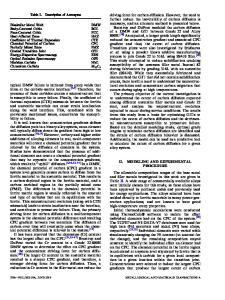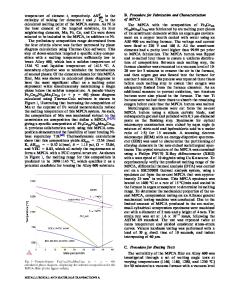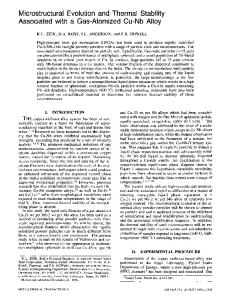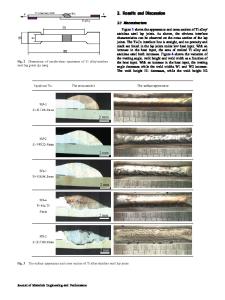Microstructural Evolution of Graded Transition Joints
- PDF / 6,036,243 Bytes
- 17 Pages / 593.972 x 792 pts Page_size
- 90 Downloads / 393 Views
TION
DISSIMILAR metal welds (DMWs) are critical for design, development, and manufacturing of very high temperature reactors, specifically steam generators in the nuclear industry. Several joining techniques can be used to join dissimilar material combinations such as diffusion bonding, arc welding, and laser beam welding.[1–3] Experience has demonstrated that failures of such DMWs can be caused by strain localization attributed to carbon diffusion and thermal stresses due to the chemical potential of carbon (CPC) gradient and the coefficient of thermal expansion (CTE) and mechanical property mismatch.[4,5] Each of these factors is caused by the large variation in composition across the
JONATHAN P. GALLER and JOHN N. DUPONT are with Lehigh University, 5 East Packer Ave., Bethlehem PA, 18015. Contact e-mail: [email protected] SUDARSANAM SURESH BABU and MOHAN SUBRAMANIAN are with the University of Tennessee, Knoxville, 1512 Middle Drive, Knoxville TN, 37996. Manuscript submitted June 5, 2018. Article published online March 6, 2019 METALLURGICAL AND MATERIALS TRANSACTIONS A
narrow interface between the two dissimilar materials. These failures can occur well before the expected service lifetime, and can cost power plants up to $850,000 per day in lost revenue and repair costs.[6] A potential solution to DMW failures is the design and implementation of graded transition joints (GTJs). Functionally graded materials have been considered for use in components exposed to high temperature gradients.[7] A typical functionally graded material consists of a ceramic–metal mixture that can be tailored to utilize the advantages of the individual material properties. The ceramic part has good thermal and corrosion resistance capabilities, and the metallic part provides superior fracture toughness and ductility.[8,9] A GTJ is a type of a fully metallic functionally graded material that consists of two regions of ‘‘pure’’ material on either side of a region where the two materials are mixed in continuously varying proportions over a known distance. This region has a graded composition that is significantly longer than what is reported in DMWs, by as much as three orders of magnitude.[4,10,11] By continuously grading the composition, the sharp changes in both composition and material properties within DMWs are broadened over the length of the VOLUME 50A, MAY 2019—2201
grade to mitigate many of the factors that cause premature failure.[12] In the context of the power generation industry, useful GTJs can be fabricated by multipass welding or additive manufacturing processes. While GTJs present a potentially viable solution to the problems associated with DMWs, the complex microstructural and property gradients introduce challenges to their effective design and implementation. Design of GTJs using finite element analysis (FEA) tools can potentially expedite the process, provided that the inputs to the model are of sufficient quality so as to produce meaningful outputs. Recent studies have investigated the modeling of functionally grade
Data Loading...











